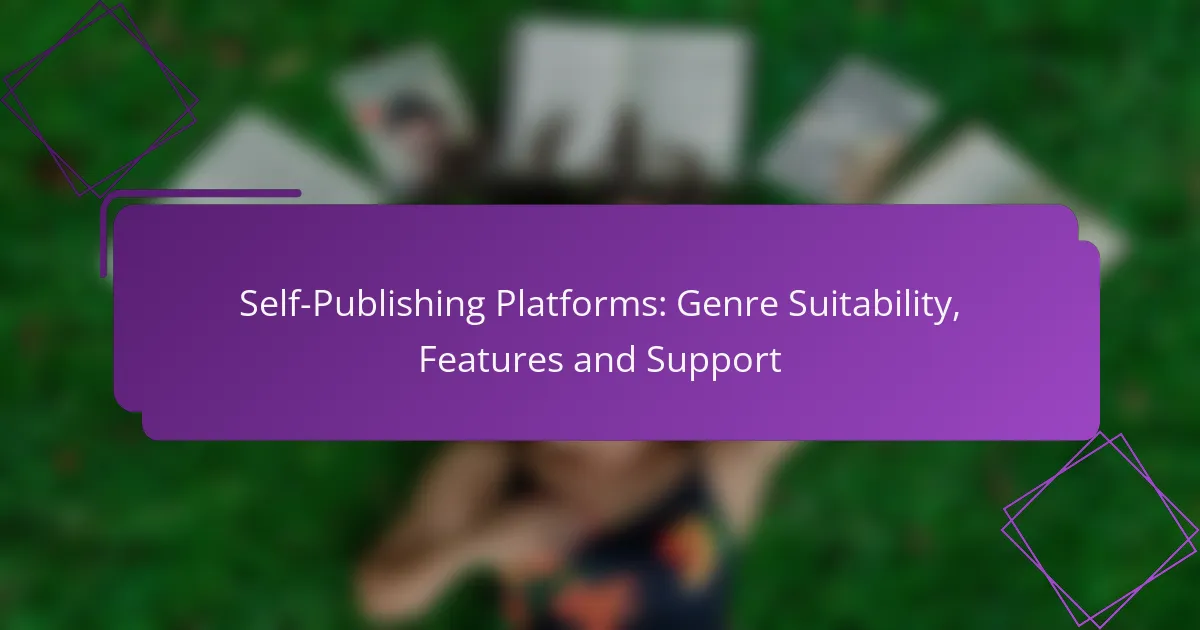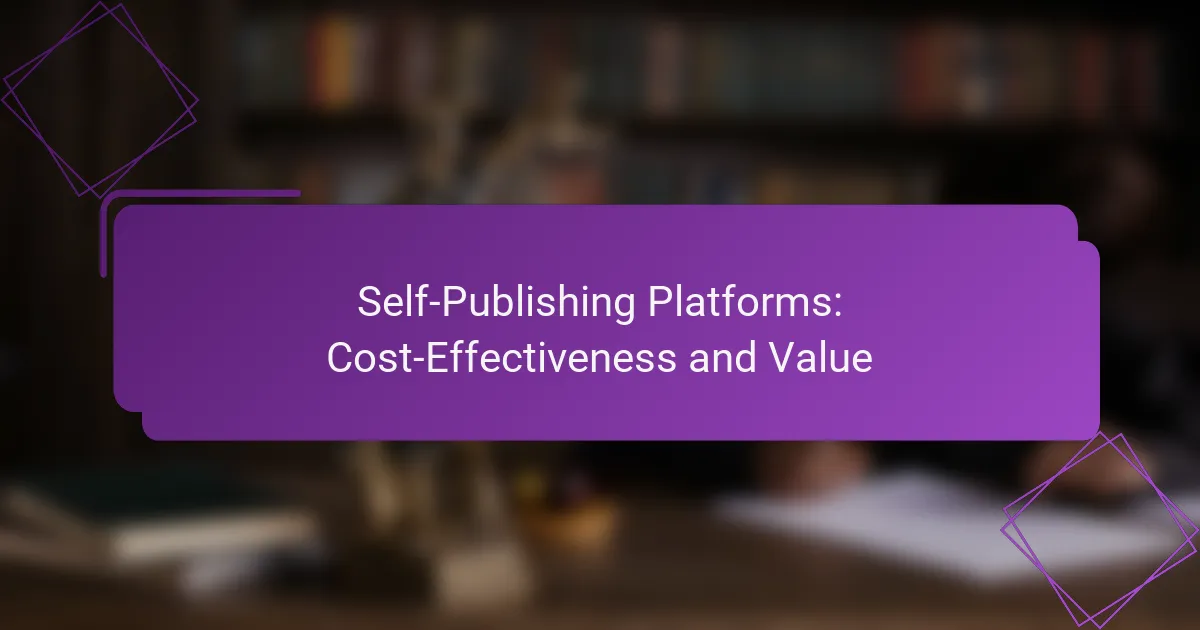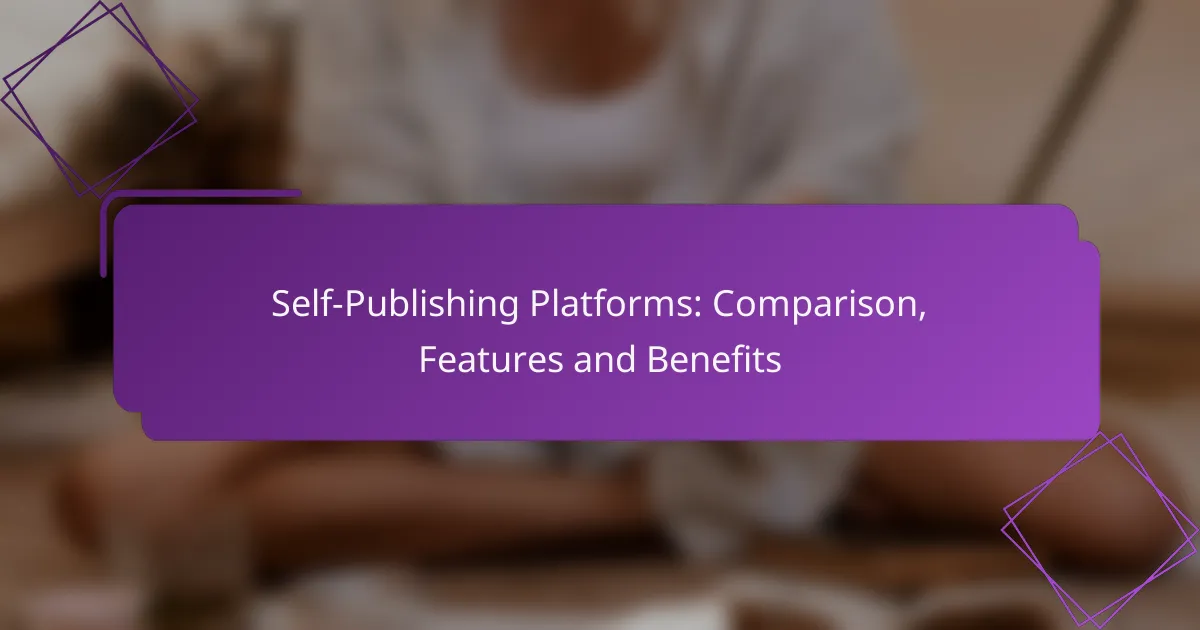Self-publishing platforms offer tailored solutions for both fiction and non-fiction authors, addressing their unique genre-specific needs. When selecting a platform, it’s crucial to consider features such as usability, distribution options, and royalty structures that can significantly impact an author’s success. Additionally, many platforms provide valuable support resources, including marketing tools and expert consultations, to help authors effectively promote their work.
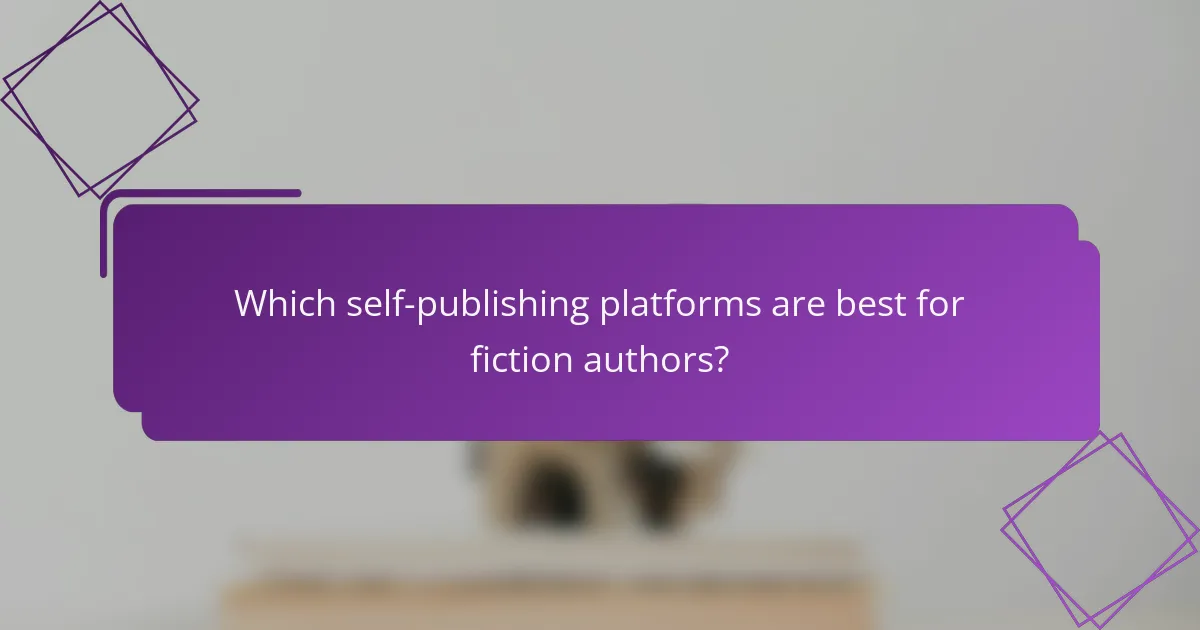
Which self-publishing platforms are best for fiction authors?
Fiction authors can benefit from several self-publishing platforms that cater specifically to their genre. Key considerations include ease of use, distribution reach, and royalty structures.
Kobo Writing Life
Kobo Writing Life is a user-friendly platform that allows authors to publish their fiction works easily. It offers a straightforward interface and enables authors to set their own prices, which can be beneficial for maximizing royalties.
One of the standout features is its global reach, particularly in markets like Canada and Europe, where Kobo has a strong presence. Authors can also participate in promotional campaigns to boost visibility.
Amazon Kindle Direct Publishing
Amazon Kindle Direct Publishing (KDP) is one of the most popular platforms for fiction authors due to its vast audience and market share. Authors can publish eBooks and paperbacks, with the option to enroll in Kindle Unlimited for additional exposure.
KDP offers competitive royalty rates, typically around 70% for eBooks priced between $2.99 and $9.99. However, authors should be aware of Amazon’s exclusive distribution requirements if they choose to enroll in certain programs.
Draft2Digital
Draft2Digital is an aggregator that simplifies the process of distributing fiction books to multiple retailers, including Apple Books and Barnes & Noble. This platform is ideal for authors looking to reach a wider audience without managing multiple accounts.
With user-friendly formatting tools and a straightforward royalty structure, Draft2Digital makes it easy for authors to publish and manage their works. Additionally, they provide free ISBNs, which can save authors money.
Smashwords
Smashwords is another aggregator that focuses on distributing eBooks to various retailers and libraries. It offers a wide range of formatting options, making it suitable for authors who want to maintain control over their book’s presentation.
Authors can set their own prices and participate in promotional programs. However, the platform’s interface may be less intuitive than others, so authors should be prepared to invest some time in learning how to navigate it effectively.

What features should I look for in a self-publishing platform?
When choosing a self-publishing platform, focus on features that enhance usability, distribution, and profitability. Key aspects include a user-friendly interface, robust distribution options, effective formatting tools, and a transparent royalties structure.
User-friendly interface
A user-friendly interface is crucial for a smooth self-publishing experience. Look for platforms that offer intuitive navigation, clear instructions, and helpful tutorials to guide you through the publishing process.
Consider platforms that allow for easy uploads and edits, as well as those that provide a preview feature to see how your book will appear once published. This can save you time and reduce frustration.
Distribution options
Distribution options determine how widely your book will reach potential readers. Choose a platform that offers access to major online retailers, libraries, and international markets to maximize your book’s visibility.
Some platforms may also offer print-on-demand services, which can be beneficial for authors looking to sell physical copies without upfront printing costs. Evaluate the reach of each platform’s distribution network to ensure it aligns with your goals.
Formatting tools
Effective formatting tools are essential for ensuring your book looks professional. Look for platforms that provide templates or automated formatting options to help you create a polished final product.
Consider whether the platform supports various file types and formats, such as ePub and PDF, to cater to different reading devices. This flexibility can enhance the reading experience for your audience.
Royalties structure
The royalties structure directly impacts your earnings as an author. Investigate how much of the sales price you will retain, as different platforms have varying commission rates, typically ranging from 30% to 70%.
Be aware of any additional fees or costs associated with publishing and distribution, as these can affect your overall profits. A clear understanding of the royalties structure will help you make informed decisions about where to publish your work.
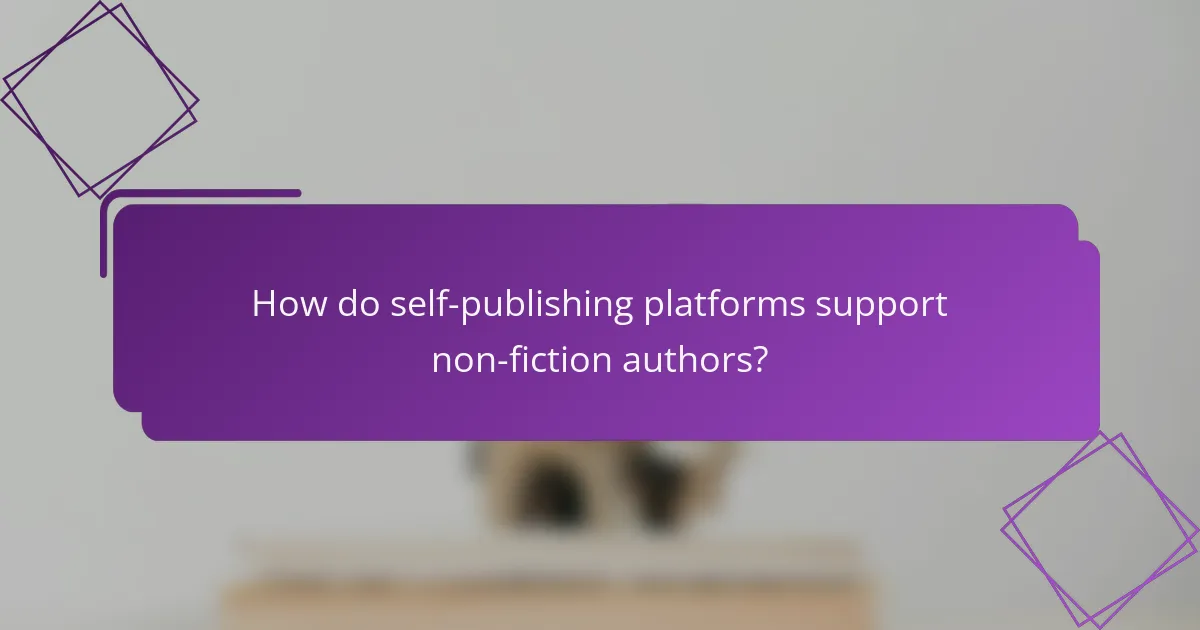
How do self-publishing platforms support non-fiction authors?
Self-publishing platforms provide essential support for non-fiction authors through various features tailored to their unique needs. These platforms offer tools for research, marketing resources, and access to expert consultations, all aimed at enhancing the author’s ability to produce and promote their work effectively.
Research tools
Research tools on self-publishing platforms help non-fiction authors gather credible information and data for their writing. Many platforms offer access to databases, citation generators, and even templates for organizing research notes. These resources can save authors significant time and ensure accuracy in their content.
Some platforms may also provide analytics tools that allow authors to assess trending topics within their genre, helping them tailor their work to current reader interests. Utilizing these tools can enhance the relevance and impact of non-fiction publications.
Marketing resources
Marketing resources are crucial for non-fiction authors looking to reach their target audience effectively. Self-publishing platforms often include promotional tools such as email marketing templates, social media integration, and options for creating visually appealing book covers. These features can significantly boost an author’s visibility in a crowded market.
Additionally, many platforms offer insights into pricing strategies and sales analytics, enabling authors to make informed decisions about their marketing efforts. Authors should leverage these resources to develop a comprehensive marketing plan that aligns with their book’s themes and audience.
Expert consultations
Expert consultations provide non-fiction authors with valuable feedback and guidance from industry professionals. Many self-publishing platforms offer access to editors, marketing specialists, and publishing consultants who can help refine the manuscript and enhance its marketability. This support can be particularly beneficial for authors navigating the complexities of self-publishing for the first time.
Engaging with experts can also help authors identify potential pitfalls in their work and provide strategies to overcome them. Authors should consider taking advantage of these consultations to ensure their non-fiction projects are polished and ready for publication.
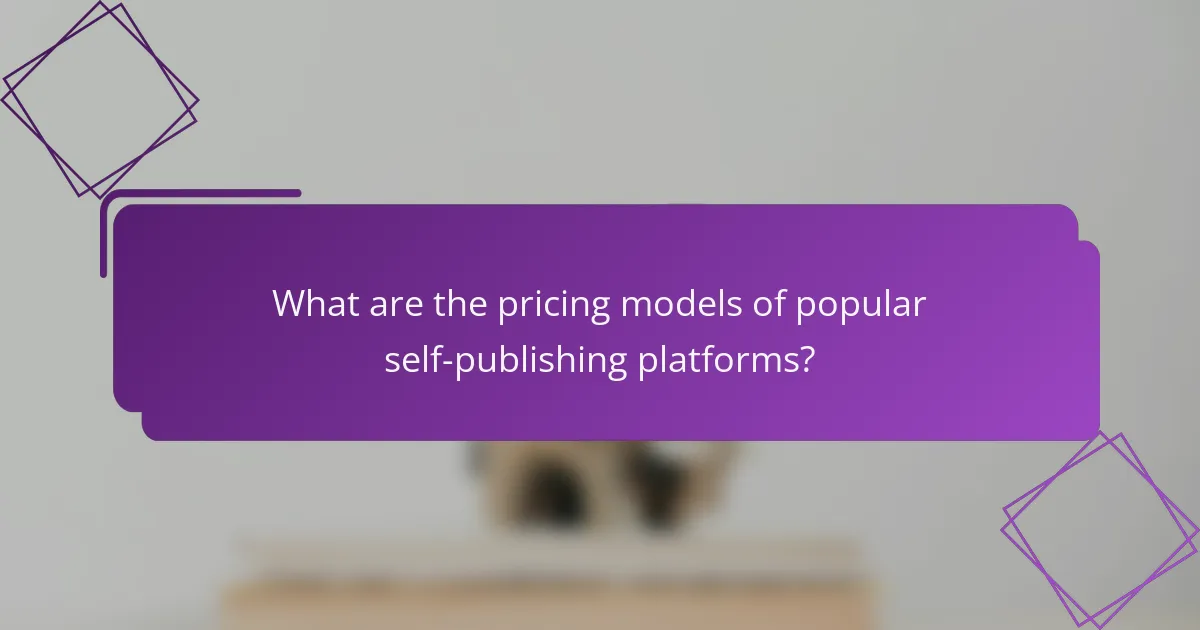
What are the pricing models of popular self-publishing platforms?
The pricing models of popular self-publishing platforms vary significantly, impacting how authors earn from their works. Most platforms operate on a commission basis, taking a percentage of sales, while others may charge upfront fees or offer tiered pricing structures based on services provided.
Amazon Kindle Direct Publishing fees
Amazon Kindle Direct Publishing (KDP) operates on a royalty model, offering authors 35% or 70% royalties depending on the book’s price and distribution options. For books priced between $2.99 and $9.99, authors can earn 70% royalties, while books outside this range earn 35%.
Additionally, KDP charges delivery fees based on file size, which can affect overall earnings. Authors should consider these fees when pricing their books to maximize profits.
Kobo Writing Life pricing
Kobo Writing Life uses a straightforward commission model, taking 30% of sales for books priced under $1.99 and 20% for books priced above that threshold. This structure allows authors to retain a larger share of their earnings as their book prices increase.
Authors can also benefit from promotional opportunities through Kobo, which may enhance visibility and sales without additional costs. Understanding these pricing tiers can help authors set competitive prices for their works.
Draft2Digital commission rates
Draft2Digital charges a 10% commission on the retail price of each sale, making it one of the more author-friendly options in the self-publishing landscape. This flat rate applies regardless of the book’s price, allowing authors to keep the majority of their earnings.
Furthermore, Draft2Digital offers free formatting and distribution to multiple retailers, which can save authors time and money. This combination of low fees and added services makes it an appealing choice for many self-publishing authors.
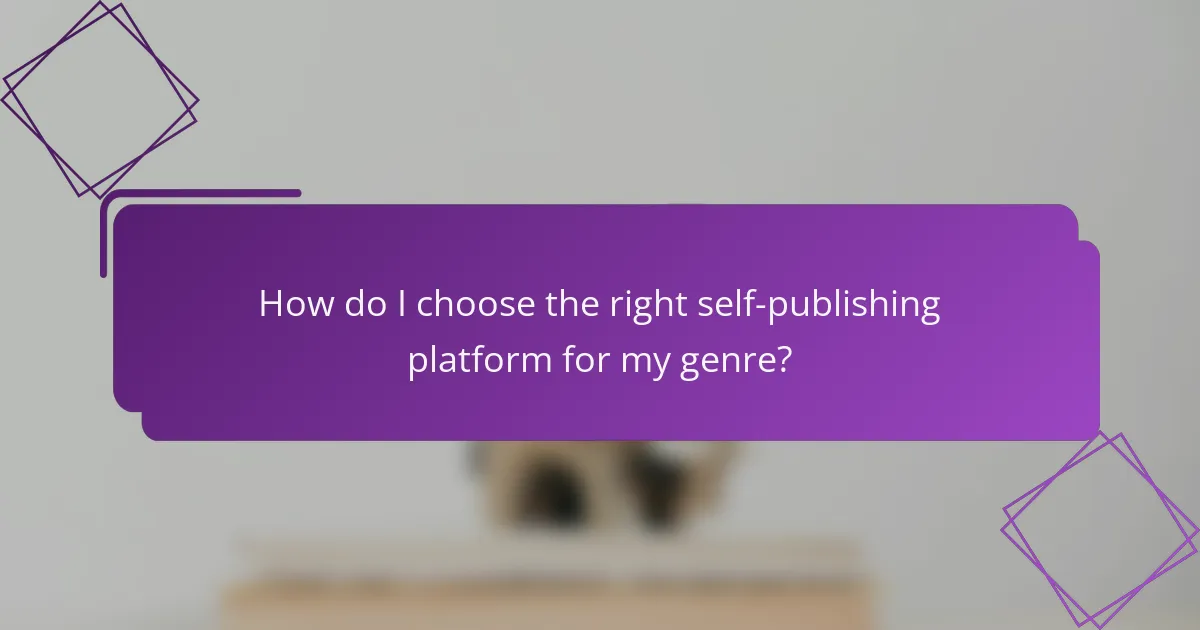
How do I choose the right self-publishing platform for my genre?
Choosing the right self-publishing platform for your genre involves understanding the specific features and audience reach that align with your book’s content. Consider what each platform offers in terms of tools, distribution, and support tailored to your genre’s needs.
Genre-specific features
Different genres often require unique features from self-publishing platforms. For example, romance authors may benefit from platforms that offer strong marketing tools and community engagement options, while non-fiction writers might prioritize platforms that facilitate detailed formatting and citation management.
Look for platforms that provide genre-specific templates, cover design options, and promotional tools. Some platforms may also offer genre-focused communities or resources that can help you connect with readers and other authors in your niche.
Target audience reach
Understanding your target audience is crucial when selecting a self-publishing platform. Some platforms have established networks that cater to specific demographics, which can enhance your book’s visibility. For instance, platforms like Amazon Kindle Direct Publishing (KDP) have a vast reach, while others may focus on niche markets.
Evaluate the distribution options available on each platform. Consider whether they provide access to major retailers, libraries, or international markets. A platform that allows you to reach your target audience effectively can significantly impact your book’s success.
